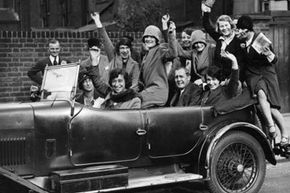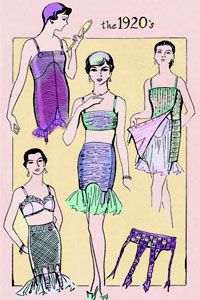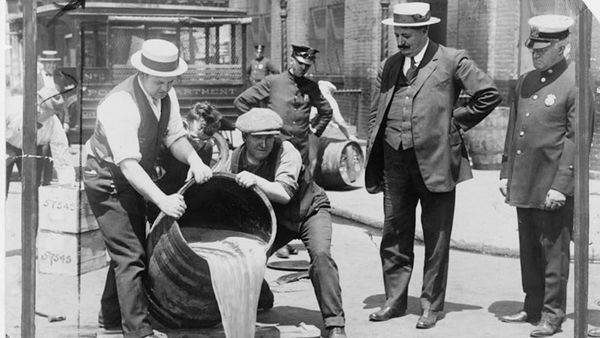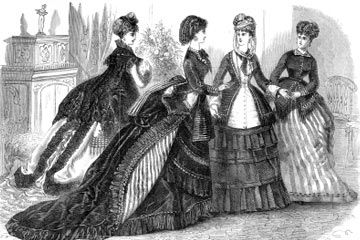In 1915, two years before the United States became involved in World War I, H.L. Mencken introduced the word "flapper" into popular media. The term traces back to British slang for a teenage girl, but Mencken reclaimed it with more specificity. Writing for the literary magazine, "The Smart Set," he described a new sort of female identity emerging in the United States: a woman who consumed music, literature and periodicals voraciously, taking her cues for behavior and style from the media in front of her, rather than the moral codes of decorum [source: Desser and Joweth]. When Mencken published this essay, "The Flapper," American women were still a decade away from the knee-length dresses and bobbed hairdos that would characterize the quintessential flapper look, but he clearly recognized the shifting attitudes in young women and their thirst for worldly knowledge that would eventually fuel the flapper fashion and sensibility.
During the 1910s, though, the delicate Gibson Girl epitomized the feminine ideal. Created by illustrator Charles Dana Gibson, Gibson Girls swept their long hair into loose, lovely up-dos. Waists were cinched with corsets, conforming silhouettes to the Edwardian S-curve torso shape (accentuating bosoms and hips), and hemlines brushed the floor while necklines tickled the throat. But as the decade drew to a close, the stifled Gibson Girl found the impetus to loosen up a little and let her hair down -- or cut it all off in high flapper style.
Advertisement
World War I and the 1918 Flu Pandemic that followed killed about 60 to 80 million people around the world combined [source: Sagert]. In addition to the widespread losses, the War also shook up gender dynamics on the home front. With millions of doughboys shipping out -- many of whom would never return home -- women were left to pick up the slack stateside, opening up more employment prospects, alongside broadening educational opportunities. Rather than pursuing the domestic life, more young women began entering college and emigrating from rural areas to the big cities. Shrugging off the Victorian era limitations placed on women, a New Woman emerged, jostling for the right to vote and agitating for the early feminist cause [source: Lavender].
Then, in 1920, with the post-War economy booming and the United States back on its feet, a feisty, more apolitical offshoot of the New Woman was born: the flapper. And for a decade, those libertine gals would Charleston, shimmy and tango around speakeasies and dancehalls, breaking every ladylike rule in the book.
Advertisement





